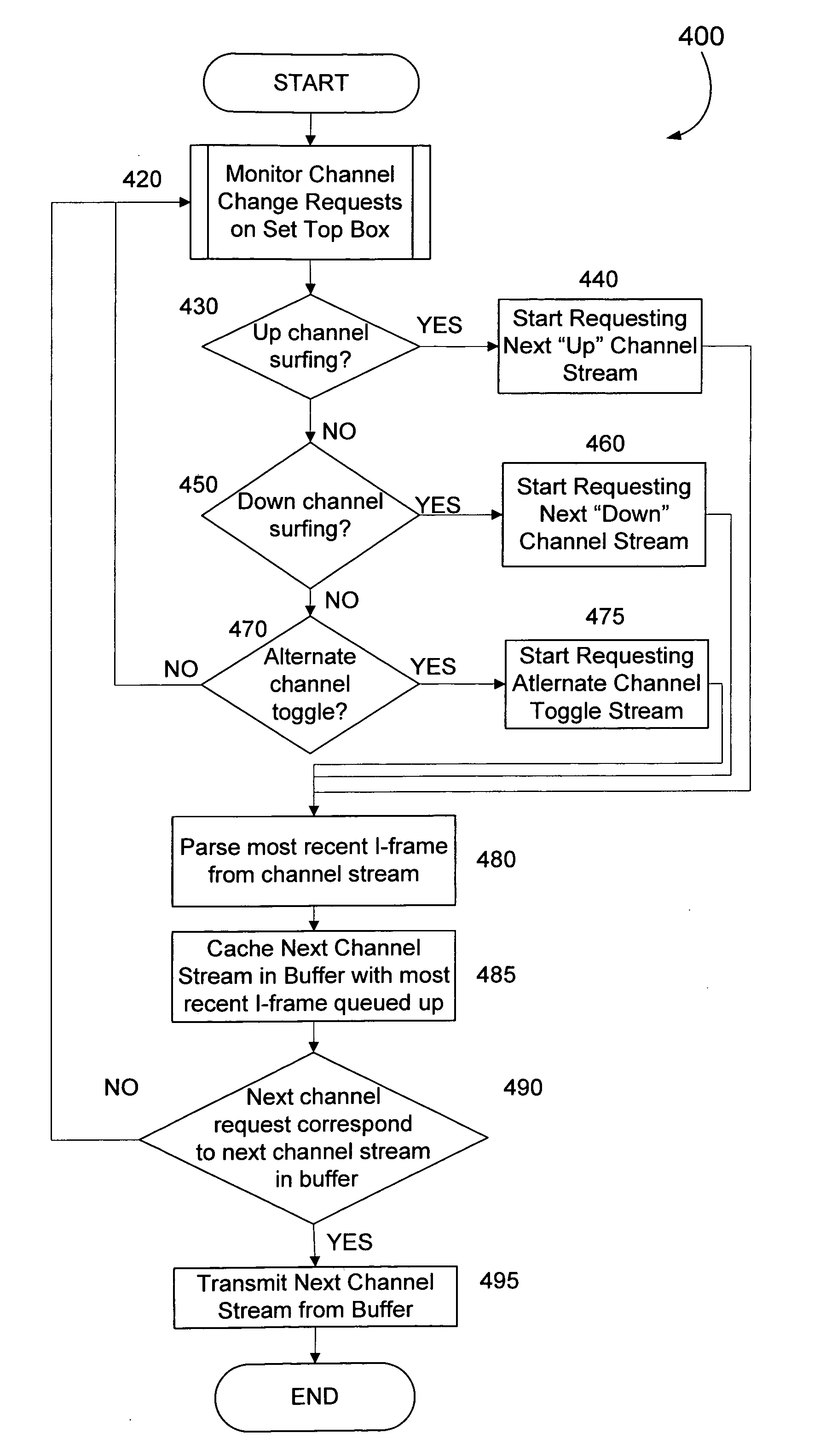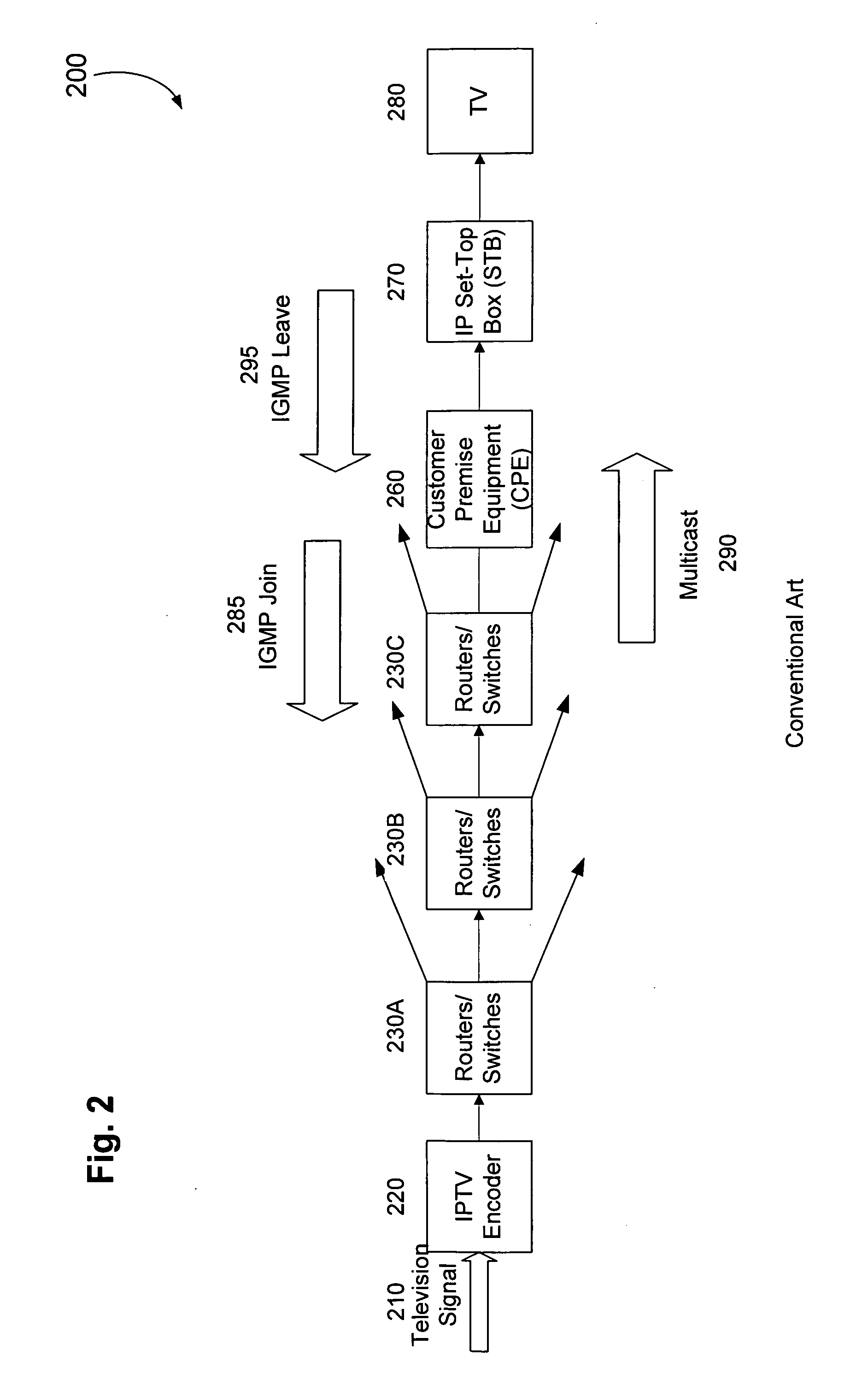Minimizing channel change time for IP video
a channel change and video technology, applied in the field of minimizing channel change time for ip video, can solve the problems of putting a strain on the network bandwidth, affecting the quality of ip video, and the prediction from one frame to the next would get progressively worse, so as to reduce the delay, and reduce the delay of channel changing
- Summary
- Abstract
- Description
- Claims
- Application Information
AI Technical Summary
Benefits of technology
Problems solved by technology
Method used
Image
Examples
Embodiment Construction
[0042] The invention relates to minimizing the delay that occurs when subscribers change channels while watching digital video delivered over broadband Internet Protocol (IP) networks. Specifically, the invention relates to reducing the channel changing delay when subscribers “channel surf.” The invention can reduce the channel changing delay by caching video packets for the most likely next channel in a buffer in anticipation of the subscriber changing channels and by having an adaptable buffer length in the set top box.
[0043] The description of the flow charts in this detailed description are represented largely in terms of processes and symbolic representations of operations by conventional computer components, including a processing unit (a processor), memory storage devices, connected display devices, and input devices. Furthermore, these processes and operations may utilize conventional discrete hardware components or other computer components in a heterogeneous distributed c...
PUM
 Login to View More
Login to View More Abstract
Description
Claims
Application Information
 Login to View More
Login to View More - R&D
- Intellectual Property
- Life Sciences
- Materials
- Tech Scout
- Unparalleled Data Quality
- Higher Quality Content
- 60% Fewer Hallucinations
Browse by: Latest US Patents, China's latest patents, Technical Efficacy Thesaurus, Application Domain, Technology Topic, Popular Technical Reports.
© 2025 PatSnap. All rights reserved.Legal|Privacy policy|Modern Slavery Act Transparency Statement|Sitemap|About US| Contact US: help@patsnap.com



